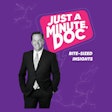
Onboarding may sound like a term used by sailing enthusiasts, but it's actually a common term used by human resources professionals. Onboarding refers to the foundational knowledge and training that new hires receive when they join an organization.
Onboarding often denotes methods that facilitate new hires' introduction to the company or, in your case, a dental practice. It ideally includes the initial orientation process in which employees learn about the practice and its values, culture, vision, and mission.
While the process encompasses more significant issues, like the employee policy manual, it also covers more minor topics, such as employee hours, where it's acceptable to park vehicles, the dress code, eating in the office, personal use of cell phones, and other details.
When onboarding goes awry
 Dr. James V. Anderson
Dr. James V. AndersonSometimes little things can unhinge the onboarding process, leading to failure. Below are two examples submitted by employees whose onboarding process threw them overboard.
Example 1: Starting off the wrong way
"No one told me the actual hours I was to work until I showed up the first day late for a meeting. The entire team looked at me like I was an alien from another planet. I was told to be to work at 8 a.m. but actually was to be there at 7:30 a.m. for a morning huddle. I thought I was early by arriving at 7:45 a.m. I parked in the wrong place because no one told me where to park, and I had to move my car. After that, the office manager had it in for me and kept repeating things like I was hard of hearing. Nothing was written as instructions, so I had to ask questions. She didn't like questions. I quit after being tormented for three months."
Example 2: Job turns into a sabotage
"I was hired to be the doctor's treatment coordinator, but another employee who wanted the job sabotaged my work. She was in charge of showing me the office systems, which she made clear was annoying her. She was so hostile and negative that I quit after my first week."
Why onboarding matters
Organizations with poor onboarding processes set the stage for an early exit by new hires. New employees who experience poorly planned and executed initiations may conclude that the practice is mismanaged. They leave thinking they made a horrible decision accepting the position, and they may feel a loss of self-esteem without realizing that it had nothing to do with them.
To stop the exits of disappointed employees, organizations have to give more critical thought to how they convert attractive job candidates into happy, productive long-term employees. Statistics bear out that the more time and energy employers spend on recruitment and selection results in a higher success rate for both employees and employers.
According to a recent article by the Society of Human Resource Management:
- Sixty-nine percent of employees are more likely to stay with a company for three years if they experience great onboarding.
- New employees who went through a structured program were 58% more likely to be with the organization after three years.
- Organizations with a standard onboarding process experience 50% greater new-hire productivity.
Where to begin with onboarding
As part of your hiring process, have the candidate read a copy of the employee procedure manual or the policy manual. The manual will clarify legal and office policy-related issues, and the applicant can ask questions or voice concerns before signing a final hiring agreement.
A formal written job description with areas of accountability spelled out can ensure new employees understand their new roles and the related expectations. The role and position within the organization must be apparent, and verifying licensing and other documents related to the job duties and legal requirements should be discussed at this time too.
Take the time to discuss the culture and vision of the practice. You want new employees to understand the organizational values and norms. Also, don't overlook small details such as:
- Where they can park their cars
- Where their workstation is located, as well as the location of specific operation/exam rooms and the staff lounge
- Who will help guide the employee in receiving instructions and training
- What training videos and/or documents will help the employee learn about their position
- Where supplies are located and what equipment is needed to do their job
- Whom they should go to for questions, problems, and other issues
- Who their direct supervisor is
Make growth a part of the employment journey
Accountability is a partnership between the new hire, the dentist, and the team. While the new hire is new to the practice and the various processes, the dentist and the team are responsible for guidance and leadership, not micromanagement. Depending on the job description and position, a 30-, 60-, or 90-day checklist can document the new hire's progress.
Below are some additional steps to help guide the employee's onboarding journey:
- Review and discuss all employment-related documents.
- Provide a clear description of the role and how the position integrates with other members of the team.
- Clarify the employee's areas of accountability and expected performance.
- Give them positive and proactive feedback daily and weekly throughout the onboarding process.
Finally, the onboarding timeline should not be hurried, and employees should not be expected to "hit the ground running" fully up to speed in a week. While some positions may be easier to master quickly, other roles take more time and training to ensure the new hire is confident and competent to do the work on their own.
Dr. James V. Anderson is a practicing dentist in Syracuse, UT, and is the CEO and founder of eAssist Dental Solutions. He can be reached via email.
The comments and observations expressed herein do not necessarily reflect the opinions of DrBicuspid.com, nor should they be construed as an endorsement or admonishment of any particular idea, vendor, or organization.



















